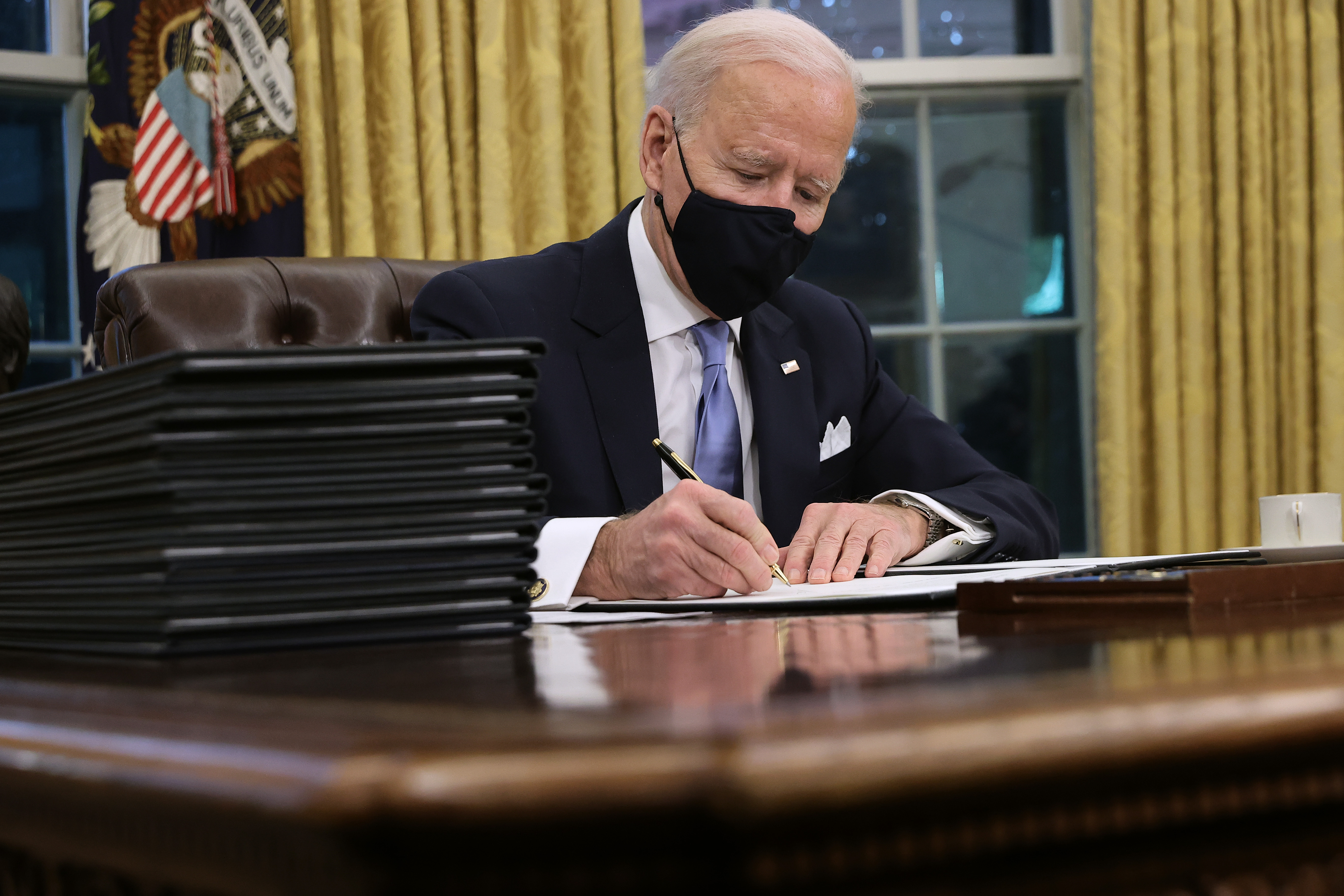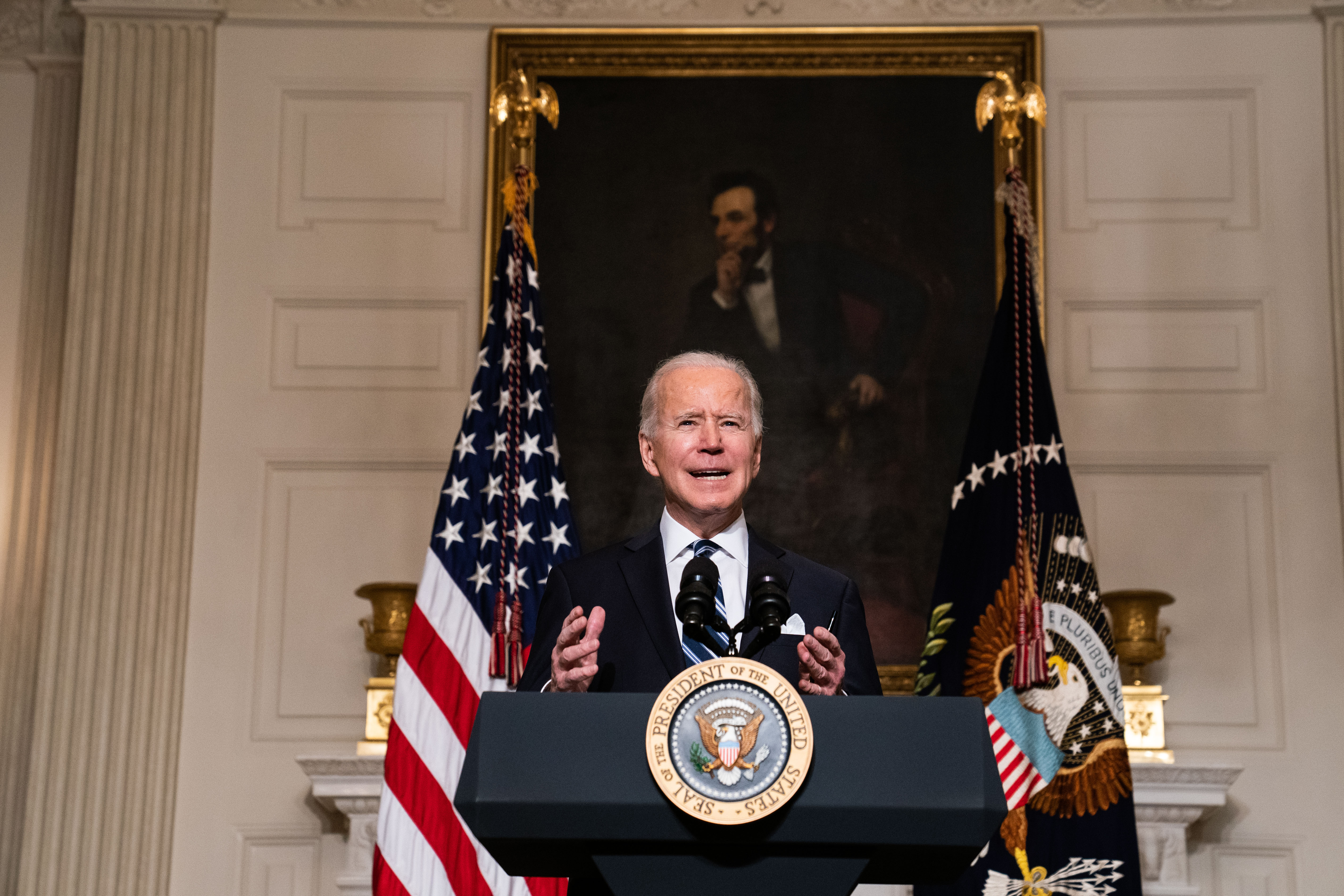During his first full week in office, President Joe Biden signed a flurry of executive orders, memorandums and proclamations aimed at addressing the most urgent priorities of his administration, including the coronavirus pandemic and resulting economic crisis. He also took measures to overturn Trump administration policies on a broad range of issues, from climate change to immigration and racial equity.
While all three forms of directives have the power of the executive branch, their differences are subtle and subjective and the U.S. constitution doesn't contain any provisions referring to these terms or spell out how to use them.
A look at how the presidential power works:
WHAT IS AN EXECUTIVE ORDER?
Get top local stories in DFW delivered to you every morning. Sign up for NBC DFW's News Headlines newsletter.
Executive orders are official directives by the President of the United States that manages operations of the federal government and do not require approval from Congress.
Executive orders are numbered and required by law to be published in the Federal Register, the official record of actions of the U.S government.
They have the "force of law" if the topic of the executive order is "founded on the authority of the President derived from the Constitution or statute," according to the House Government Operations Committee.
But its impact can be fleeting; Congress can't just pass a new law to override an executive order, but it can cut off funding to make carrying it out impossible.
When President Barack Obama tried to use executive authority to fulfill his campaign pledge to close the U.S. military detention center at Guantanamo Bay, Cuba, Congress stymied him by voting to block funding to pay for the transfer of prisoners from Guantanamo to the U.S., including for prosecution or medical care.
Future presidents can also undo them by amending or rescinding an order from a previous president.
HOW DO PRESIDENTS USE EXECUTIVE ORDERS?
Executive orders allow presidents to make policy outside of the regular lawmaking process.
While it is common for members of the opposing political party to characterize a president's executive orders as overstepping bounds of power, all presidents, from George Washington to Donald Trump, have used them. The exception is William Henry Harrison, who died of pneumonia after serving just one month in office.
Franklin D. Roosevelt holds the record for most executive orders in presidential history, with 3,721, while John Adams, James Madison and James Monroe are tied for least, with one each. Modern presidents have issued an average of 30 to 40 executive orders per year.
Most of FDR's orders were measures aimed at responding to the Great Depression or initiating wartime policy. His most controversial directive came in response to the bombing of Pearl Harbor in 1941 when he signed Executive Order 90666, creating detention centers for hundreds of thousands of Japanese Americans who were rounded up en masse and relocated to camps for the duration of World War II.
Meanwhile, other executive orders have changed the course of history. President Abraham Lincoln's Emancipation Proclamation executive order freed slaves in the South in 1863 and both Presidents John F. Kennedy and Lyndon Johnson used executive orders to bar racial discrimination in federal housing, hiring and contracting.
WHAT ARE PROCLAMATIONS?
A proclamation is also a form of executive action, but is largely used for ceremonial purposes and usually doesn't carry any legal effect.
Like executive orders, proclamations must be numbered and published in the Federal Register.
HOW DO PRESIDENTS USE PROCLAMATIONS?
The most common use of proclamations are for holidays, commemorations and special observances, according to the Office of the Federal Register. For example, when a former lawmaker or justice of the Supreme Court dies, a president might issue a proclamation, ordering American flags to be flown at half-staff.
The first-ever proclamation, issued by President George Washington, declared a National Day of Thanksgiving in 1789.
However, some proclamations can be used by a president to push policy objectives through a deadlocked Congress. President Biden has issued proclamations to halt the construction and funding of the wall at U.S. southern border and to reverse Trump’s ban on travelers from several predominantly Muslim countries.
Biden's predecessor issued 570 proclamations over the course of his tenure, while President Obama issued 1,228 and President George W. Bush issued 941, according to the Federal Register.
WHAT ARE MEMORANDUMS?
A memorandum is another type of executive action, but with fewer formalities.
It does not have to be published in the Federal Register, it doesn't have to cite the president's legal authority and the Office of Management and Budget is not required to issue a "Budgetary Impact Statement," according to the Library of Congress' website.
HOW DO PRESIDENTS USE MEMORANDUMS?
An executive memorandum doesn't have an established process for how a president can issue it.
Traditionally, they have been used by presidents to give formal orders instructing federal departments or agencies to draw up new regulations or compile reports.
In 2020, former President Trump issued a “Memorandum on Deferring Payroll Tax Obligations in Light of the Ongoing COVID-19 Disaster,” which directs the Secretary of the Treasury to explore legislative and other avenues to eliminate the obligation to pay the deferred taxes and implement guidance on the deferral.
Biden, meanwhile, used his executive authority to sign a memorandum to preserve Deferred Action for Childhood Arrivals, the Obama-era program that has shielded hundreds of thousands of people who came to the U.S. illegally as children from deportation since it was created in 2012 through an Obama directive. Trump issued his own executive order to undo DACA in 2017.
This week, Biden also issued a memorandum directing the Department of Housing and Urban Development to take steps to promote equitable housing policy.



